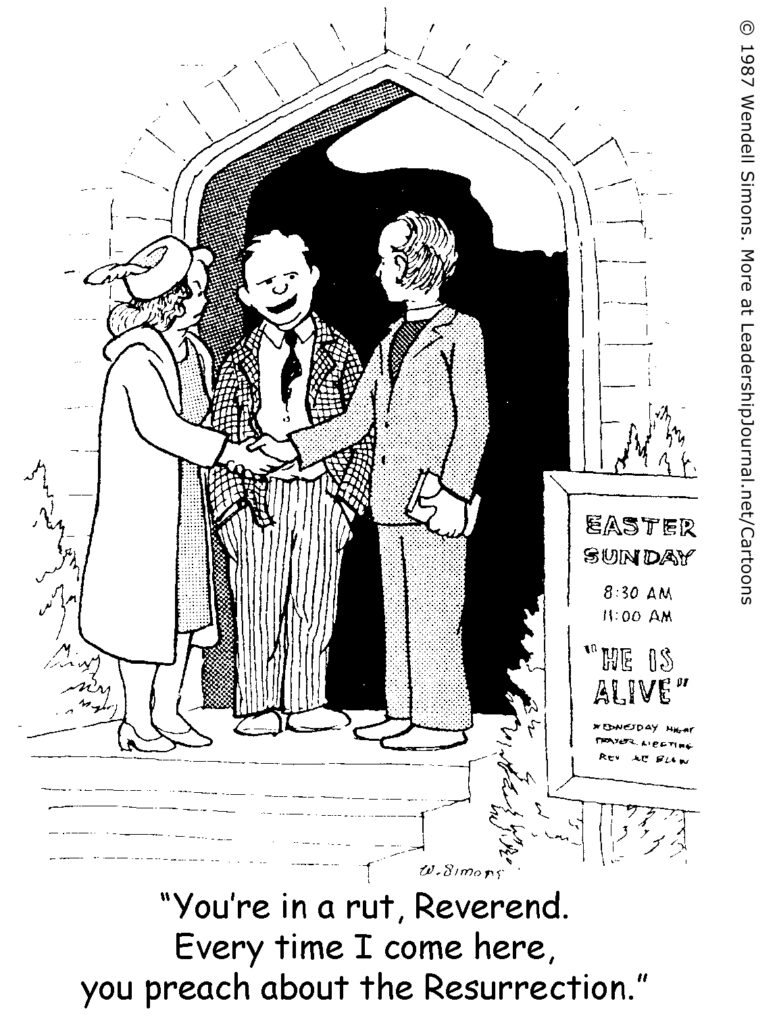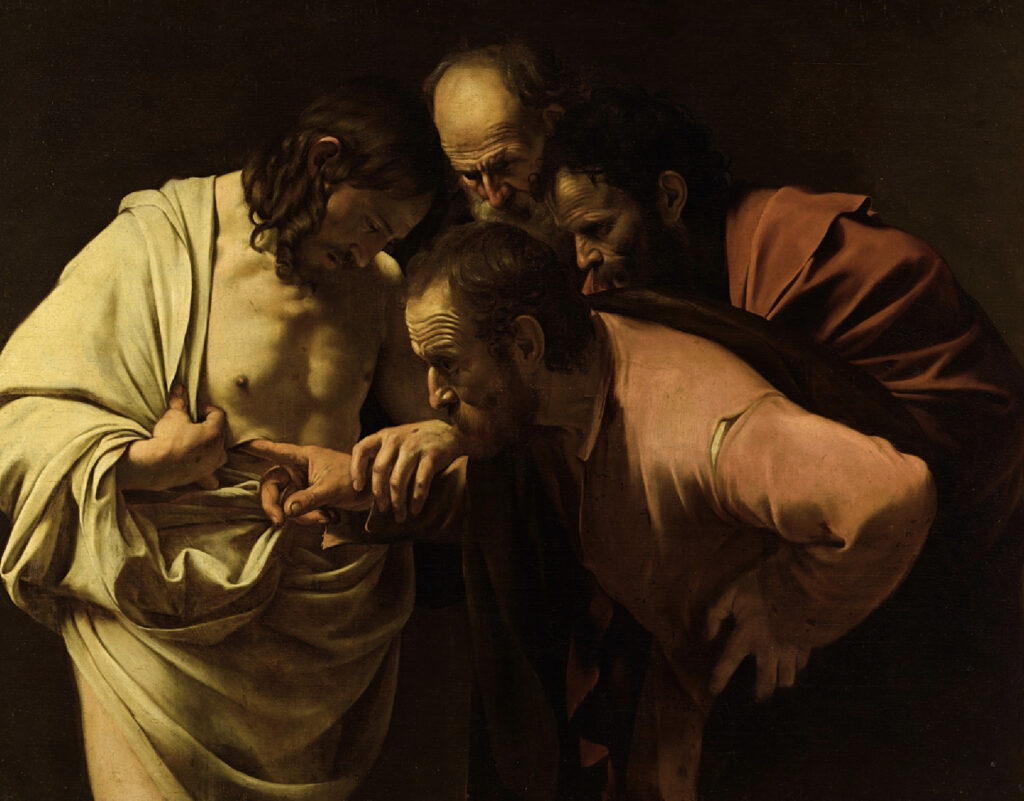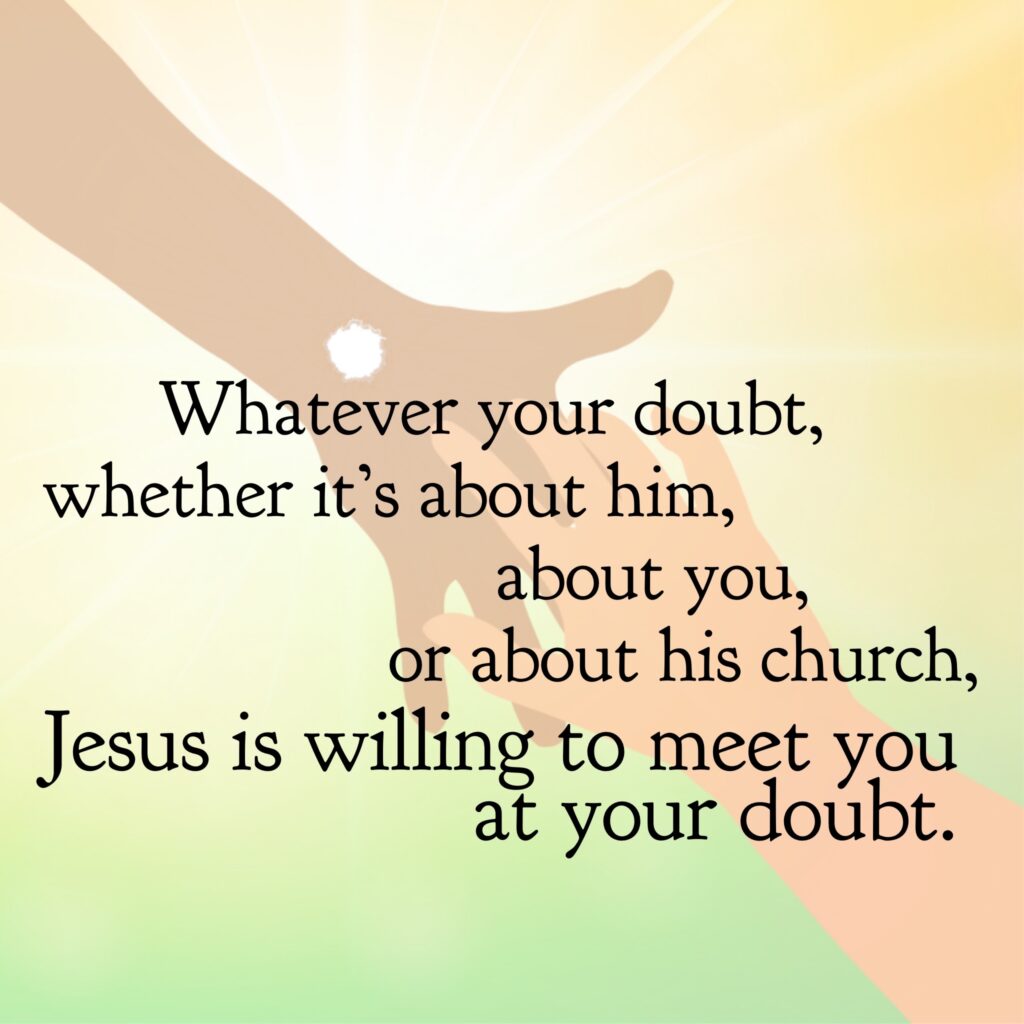“My name is Thomas. No doubt you’ve heard of me.”
Easter Through Thomas’ Eyes
Every preacher understands the pressure of Easter. It’s one of the days we can count on guests and a full house. But, we also recognize that for many, this may be their only encounter with the gospel for the year. So, we want to be as engaging, welcoming, clear, and relevant as possible.
So, y’know . . . no pressure.
The challenge of Easter is to present the same message each year but in new ways. This can be difficult, especially with an already packed calendar leading up to Easter and Holy Week. And, without careful thought toward variety, we can make the good news seem tedious and repetitious to our hearers.

The Power of First-Person Narrative Sermons
“A first-person sermon communicates the idea of a biblical passage through a character with personal knowledge of the events in the passage. Preachers take on the personality of this character and reexperience the events of the biblical text in order to recommunicate what the original author communicated to the first recipients of the biblical narrative.”
Effective First-Person Biblical Preaching: The Steps from Text to Narrative Sermon, by J. Kent Edwards
I’m taking a class on improving the creativity of our preaching as part of my DMin at Lincoln Christian University. Among the requirements for the class is to preach two sermons using creative forms that are less familiar to me. In Edwards’ book (cited above), he encourages readers “Preach first-person sermons at Christmas and Easter. By communicating these well-known stories through the eyes of a different character every year, you will ensure that your congregation hears these old, old stories in fresh, new ways.”
Tackling a first-person narrative for Easter seemed the best way to kill two birds with one sermon.
My Name is Thomas
The Seeds of the Sermon
I’ve preached first-person narrative sermons on two other occasions. I find these sermons exhausting to write and nerve-racking to deliver. It amazes me, though, how they seem to spring from the tiniest inspirations. In the case of this sermon, it was a Monday morning devotional video from Shane J. Wood, where he reflected on Caravaggio’s painting, The Incredulity of Saint Thomas, noting that Jesus is guiding Thomas’ hand into the wound in his side. The image of Jesus, not merely offering his wounds to Thomas but pulling his hand to his wrist and side, intrigued me. It changed how I saw this doubting disciple.

Around the same time, I found myself reading the story of the healing at the pool of Bethesda in John 5:1-9. I noted how this man, who hadn’t stood for thirty years, stood simply at Jesus’ word! Jesus didn’t have to drag him to the feet like he had to drag Thomas’ hand to his side. Our doubts can indeed paralyze us.
If there’s one element of the sermon I wish I had more time to hone, it would be the juxtaposition of these two men. I liked the idea of Thomas trying to comprehend the paralytic’s faith.

Resurrecting Thomas for Easter
Hopefully, no one noticed that Thomas wore the same outfit Matthew had worn two and a half years earlier in a previous first-person narrative sermon. Maybe they shopped at the same store in Galilee (The Galilee Gap?). Costuming can be a difficult but needed step in establishing that the character truly is present. So is being able to tell the story convincingly. I’m not one to memorize my sermons; I fear that ship sailed long before my fifties. And I couldn’t have Thomas showing up with bifocals on! So, I printed scant notes in a large font and did my best to commit critical portions to memory. I practiced many times Friday, Saturday, and between Sunrise and regular services on Easter morning.
While I knew reading my notes would be a problem without glasses, I had not anticipated how difficult it would be to read the crowd without them! Except for the few sitting toward the front (very few), everyone was a giant blur. I hadn’t realized just how much I rely on eye contact to connect with my audience.
There was also a bit of a “wardrobe malfunction.“ I hadn’t accounted for my headdress hitting the clip-on microphone we use for the livestream, which I found distracting in the recording. Also, my tunic seemed much looser Sunday morning than it had when I rehearsed. Maybe I lost weight sweating about the sermon Saturday night!
Reactions and Reception
A fair number of people in the audience on Easter are not regularly subjected to my preaching. After twenty years in the same church and growing up in the community, though, they know me, and have a good idea of what to expect from me. Still, I was aware this sermon might amount to a strange first impression for some.
To my relief, the responses at the door were overwhelmingly positive. A few first-time guests thanked me for keeping things interesting and engaging. My regulars were immensely encouraging. One regular, a university professor, commented how we need sermons like this to connect us to the life of the Bible and remind us of how it speaks to our needs. Another expressed appreciation and said I should preach like that every week.
Uh . . . no thanks.
Another realization from further reflection, it occurs to me that the men of the church were much freer with their comments and appreciation for the sermon than usual. That doesn’t surprise me as much as it confirms what I know about their love of story.
Online Responses
Many in our online crowd are connected in one way or another with the life of our church (relatives, former residents, and life-long friends). One who lives on the East Coast commented, “This message is one that should be saved for posterity! KCC is so blessed to have you there preaching every week with words of enlightenment, and always praying for those in the community and around the world who need comforting, and encouragment. Thank you.” That one goes in my “Encouragement File!”
Tim Barbee, one of my fellow DMin students, watched and critiqued my sermon with, “This sermon hits all of the high points of a first person narrative, without many of the cheesy, contrived elements so often found in these types of sermons. It was also a good use of sanctified imagination that drew from the text itself, not lame guesses or suppositions about donkeys or tunics or other worthless pieces of conjecture. You stayed with the text, the author’s intent. I appreciated the Johannine context of John 5. And I absolutely loved how you emphasized, ‘He also talked about you’ at the end.”
I’m blessed by his appreciation for the message, and I’m not at all surprised at what his comment highlights. He’s got a great ear for sermons.
“I Could Never Do That”
When I studied first-person narrative sermons in a grad school class, I found myself saying, “I could never do that.” The thought of putting on a costume, assuming a character, and hoping people bought into the message had me wanting to crawl inside a hole. Despite the feeling of cringe, though, I wrote a message that fit the style and was blown away by how much I enjoyed the process. Still, I dug in my heels and said, “I’ll never deliver this one before an audience!”
Six months later, I ate those words when Matthew showed up and told the story of Jesus calming the storm. My congregation loved it, and I committed to trying it again.
My second first-person narrative was a much more imaginative take on Paul’s corrections to Euodia and Syntyche in Philippians 4:2-9. I brought the story up to modern times, gave the narrator a small-town twang, and offered The Ballad of Eunice and Cindy.
We’re Wired for Story
Richard L. Eslinger reminds us that “To speak of the ‘narrative center’ of biblical preaching . . . is to bear testimony, first, to the surprising ways in which story has become recovered as the preferred mode for interpreting self and world” (page 57). I’m the first to admit narrative preaching is not my preferred mode and one that still causes me tremendous anxiety in preparation and delivery. But something deep within us needs stories. My crowd responds to stories.
Long before we listened to lectures or left cuneiform on clay tablets, we were sitting around campfires telling stories. We’re wired for story. But more than that, we’re wired together for story. Studies show that “when we see or hear a story, the neurons in our brain fire in the same patterns as the speaker’s, a process known as ‘neural coupling.’” Narrative creates community in ways we have yet to begin to understand, providing a neural link, perhaps a “soul link to the divine” when we tell Jesus’ stories to one another.
And through the communal experience of story, we create a compelling connection that allows “Doubting Thomas” stands before the people we love and declare, “Jesus told me about you.”
Tips for Preaching a First-Person Narrative
These are just a few quick thoughts to get you started writing a first-person narrative sermon. Much more detail can be found in the resources below.
1. Pick a Familiar Text. You don’t want to send your people off on a raid with Jephthah or have them build an altar with Manasseh. Pick a story they know by heart.
2. Pick a Character to Tell the Story. It may be one of the disciples or a side character you can give a voice to (see “My Name is Harbona,” cited below). It could be a character you imagine would have been present at the event (see my sermon, “The Ballad of Eunice and Cindy,” cited above).
3. Determine what point this person would take from the story. This is your “big idea,” but more than that, it’s the place where the character connects your audience to the text. What will the audience learn by listening to them? On the other hand, is there a chance the character might miss the point but still have an important story to tell (again, see Don Sunukjian’s example below)?
4. Begin outlining the path from character to story to point. This is not a three-point sermon with a poem at the end. It’s a narration of events. What steps (moves) will you have to make to ensure people are following (and willing to follow) your story?
Resources for First-Person Narrative Sermons
Effective First-Person Biblical Preaching: The Steps from Text to Narrative Sermon, by J. Kent Edwards. This book is a strong defense of narrative preaching with plenty of advice on how to do it. There are several example sermons in the appendices, but you’d be better off searching the author’s sermons on YouTube.
It’s All in How You Tell It: Preaching First-Person Expository Messages, by Haddon W. Robinson and Torrey W. Robinson. A short read with plenty of insights for first-person narrative sermons. Chapters are well-organized and easily accessed. The real strength of the book might be the appendices with their sample sermons and Robinson’s own bibliography of resources for first-person sermons.
My Name is Harbona, by Don Sunukjian. This is an excellent example of a first-person narrative sermon from a master of the craft.

Your sermon Sunday was awesome…I loved it….reading your process has been very interesting & enlightening…I now appreciate your performance even more…looking forward to your next first person sermon 😁
Carole, your encouragement always makes my day. Thank you so much! I’m kicking around a few ideas for another first-person sermon. 😉